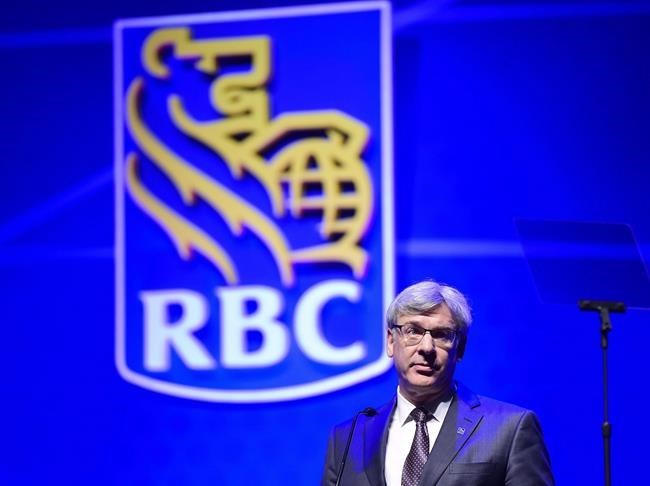TORONTO — Canada's big banks say they have the cash reserves needed ahead of a potential economic slowdown, while minimizing the risks it poses to their finances.
Speaking at the RBC bank CEO conference in Toronto Monday, executives said they would all be able to meet the higher capital requirements the regulator imposed in December in response to rising economic vulnerabilities, while they have various options if buffer requirements increase further.
Dave McKay, chief executive of RBC, said the bank will stay well above the 11 per cent capital buffer requirement even with its pending $13.5-billion acquisition of HSBC Canada, while there should be time to adapt to any further potential increases.
While the housing market is going though somewhat of a correction, McKay said he doesn't expect that an increase in mortgage defaults would be a significant stress for the bank's capital, as only a low-single-digit percentage of its overall borrowers have both a potential payment crunch and low collateral in their home.
The bank's base case forecast has unemployment going up closer to six per cent as part of a mild recession, compared with the current five per cent, but still a low level of bankruptcy or default.
A pullback in the economy would mean more pressure on consumers, but shouldn't affect bank finances as much thanks to the still heighted cash reserves of borrowers and the ability to divert spending, said CIBC chief executive Victor Dodig.
"This is not a bank credit issue. This is an issue of consumer lifestyle. More money will have to go from discretionary spending to interest expense" he said.
CIBC is aiming to keep its capital ratio at around 11.5 per cent, he said, which is above the minimum set by the Office of the Superintendent of Financial Institutions, but below the 12 per cent maximum the regulator could potentially raise it to.
Scotiabank president Scott Thomson, who is taking over the CEO role from Brian Porter in February, said the bank aims to build its credit buffer to 12 per cent by the end of the year. He said Scotiabank will see an increase in capital from organic growth, as well as a boost from changes in international rules on how capital is assessed, while the bank still also has the option of instituting a dividend reinvestment discount, as most other banks already have, to increase capital.
"I feel pretty comfortable with getting to that 12 per cent level by the end of the year, and I think that's appropriate for the environment that we find ourselves in."
At Monday's bank CEO conference, OFSI head Peter Routledge said the regulator made the shift higher requirements as part of being proactive, as systemic vulnerabilities have persisted at elevated levels, and in some cases have risen materially in recent quarters.
"We would rather err on the side of acting too early than be criticized for acting too late," said Routledge.
And while the higher capital requirements have raised scrutiny over how well banks will be able to meet them, especially if there is a pullback in the economy, Routledge also said the buffer is meant to be built up during good times and then released when the situation worsens and banks need the capital.
“That to me is sound, intelligent risk management. Building buffers when you can, and releasing them before you really need to.”
This report by The Canadian Press was first published Jan. 9, 2023.
Companies in this story: (TSX:RY; TSX:BNS; TSX:NA)
Ian Bickis, The Canadian Press



